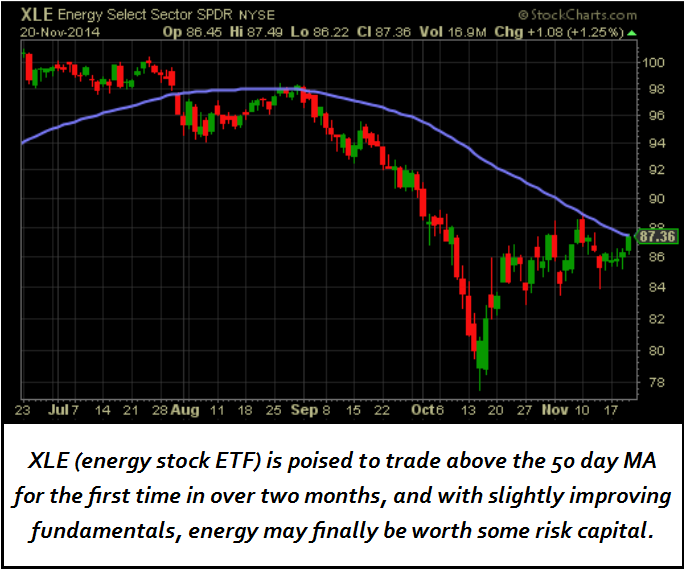Global Flash PMI Analysis
Global November Flash Manufacturing PMIs
- Chinese PMI 50.0 vs. (E) 50.2.
- German PMI 50.0 vs. (E) 51.5.
- EMU PMI 51.3 vs. 50.9.
- US PMI: 54.7 vs. 56.5.
Takeaway
The biggest disappointment in the data was the German PMI, which very surprisingly plunged to 50.0. This was the biggest negative of all the reports, although the broader EMU manufacturing PMI helped offset some of the negativity of the German report. (European markets would have been down even more if the EMU number hasn’t beat.) Bottom line, the flash PMIs signal that the European economy is still under pressure, and the positive effects of the ECB stimulus haven’t started helping materially, yet. This disappointing reading isn’t altering my opinion that Europe can outperform. However, the data weren’t that bad, and my opinion is based more on negative sentiment and ECB balance sheet expansion more than economic recovery. Case in point, while Europe sold off yesterday, it’s still up for the week.
Turning to the U.S., there were more conflicting data. The manufacturing PMIs missed expectations and hit the lowest levels since January, while the Philly Fed manufacturing survey surged higher to 40.8 (I don’t think I’ve ever seen a number that high). Generally, the national flash PMIs are the better gauge of manufacturing activity, and although they missed estimates, a reading of 54 still is healthy and it’s not going to make anyone nervous about the pace of growth in the U.S.
Finally, the Chinese number hit 50.0, just missing expectations. While the media focused on output dropping below 50, the number wasn’t that far from expectations and new orders (the leading indicator of the report) remain positive.
The pace of growth in China seems to be stable. While there are downside risks, the government remains committed to stimulus where needed, and that’s softening the blow of the “miss.”
Bottom line, they weren’t good numbers but they weren’t enough to materially change the outlook of a very slightly growing global economy.
This was an excerpt from today’s edition of the Sevens Report. To continue reading today’s Report, simply sign up for a Free Trial on the right hand side of this page.

